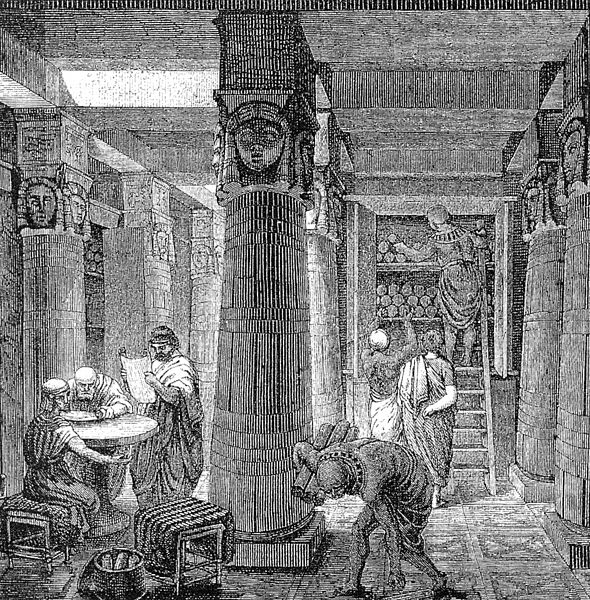
In 332 BCE, ~2,300 years ago, Alexander the Great conquered Egypt and established the city of Alexandria on the port town of Rhakotis. Ptolemy, Alexander’s general, moved the capital of Egypt from Memphis to Alexandria where he entombed Alexander’s body after his death in 323 BCE. The city soon became a thriving city attracting many scientists, historians, philosophers, mathematicians, and artists becoming a hub of research and education with the foundation of the Ancient Library of Alexandria in 288 BCE. The Library would eventually house 700,000 scrolls including many autonomy and medical texts. The School of Alexandrian Medicine, established in the 3rd century BCE, would also teach many highly accredited physician who would go on to theorize and discover important works. These works would go on to have extensive influence and importance as credible medical references for over centuries. Alexandria experienced two major fires one in 48 BCE and one in 391 CE which burned down the surviving sections of the Ancient Library of Alexandria and the School of Alexandria Medicine. The two fires combined destroyed almost all of the medical and autonomy texts created in Egypt. The teachings of Alexandria continue to survive through physicians who studied at Alexandria before fire in 391 CE and went on to work in other countries. An example of this is Galen, a famous Roman physician, who studied at Alexandria. His works went on to have extensive influence on medicine during the Renaissance and Leonardo Da Vinci.
Sources:
Mark, Jashua. "Alexandria, Egypt". Ancient History Encyclopedia. 28 April, 2011.
Serageldin, Ismail. "Ancient Alexandria and the dawn of medical science". Global Cardiology Science & Practice, vol. 4, Dec. 30, 2013:395-404. DOI: PMC10.5339/gcsp.2013.47. March 7, 2018
Image:
A 19th century artistic drawing of the Library of Alexandria based off of archaeological evidence.
Artist: O. Von Corven
Source: Wikimedia Commons
*Please Note: The date on the timeline shows 332 CE, but the actual date is 332 BCE. The entry would not be accept the date of 332 BCE for the event date.
